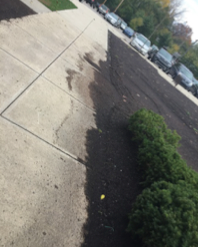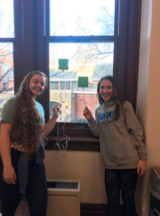2018, CINCINNATI, OH, UNITED STATES

At Walnut Hills High School, thousands of students walk across campus seven hours a day, 5 days a week. Because of this, during rainy conditions, it is very common to find soil and litter running into sidewalks and parking lots and clogging drains in multiple locations. To address the ongoing erosion issue, a project was proposed to use permeable pavers to limit erosion, sustain plant life, and lessen water runoff that leads to pollution. Patrick Carroll and Spencer Jones selected to implement permeable pavers because they are a realistic and financially reasonable solution to the environmental problem of soil erosion and water runoff. They allow rain and melting snow to go into the ground, reducing runoff and lessening the amount of pollutants that go into sewers.
Since the project occurs on a Cincinnati Public School property, the team members met with the AP Environmental Science teacher, principal, and alumni director of Walnut Hills High school. The team made a formal presentation, discussing the negative environmental impacts of not using permeable pavers at Walnut Hills High School. With the funds in place and a positive impact on the school, the administrators indicated that the school was supportive, and the alumni department was positive about the project. However, the team was notified that the Cincinnati School Board would have to approve a project of this kind before implementation.. The team expects that Cincinnati Public School will approve the project and implementation will move forward in the near future. Patrick and Spencer are aware that they chose an ambitious project but believe it will make an important ecological impact at Walnut Hills High School. In addition, the completed project can encourage other schools to make similar changes to help the local watershed.















